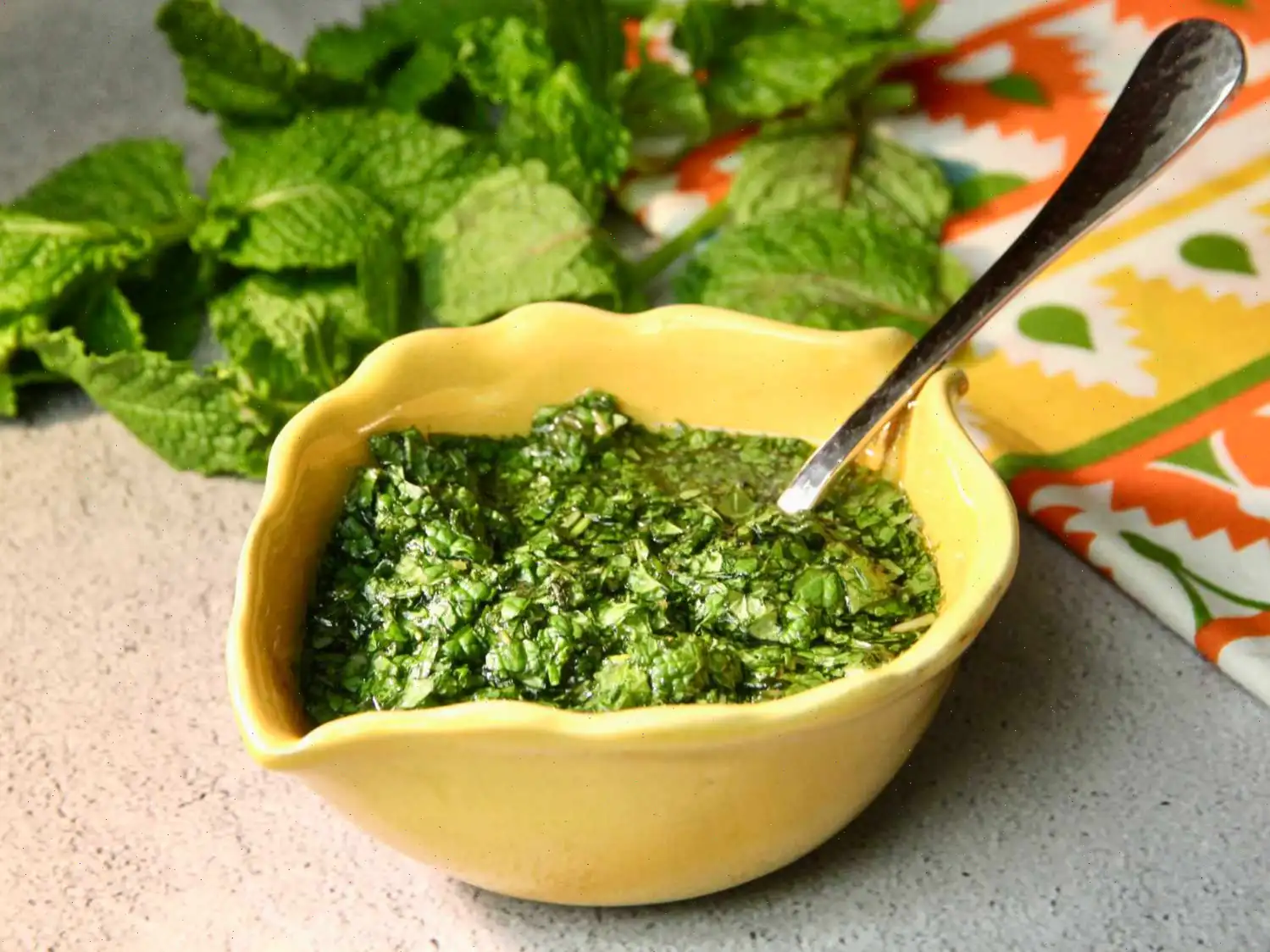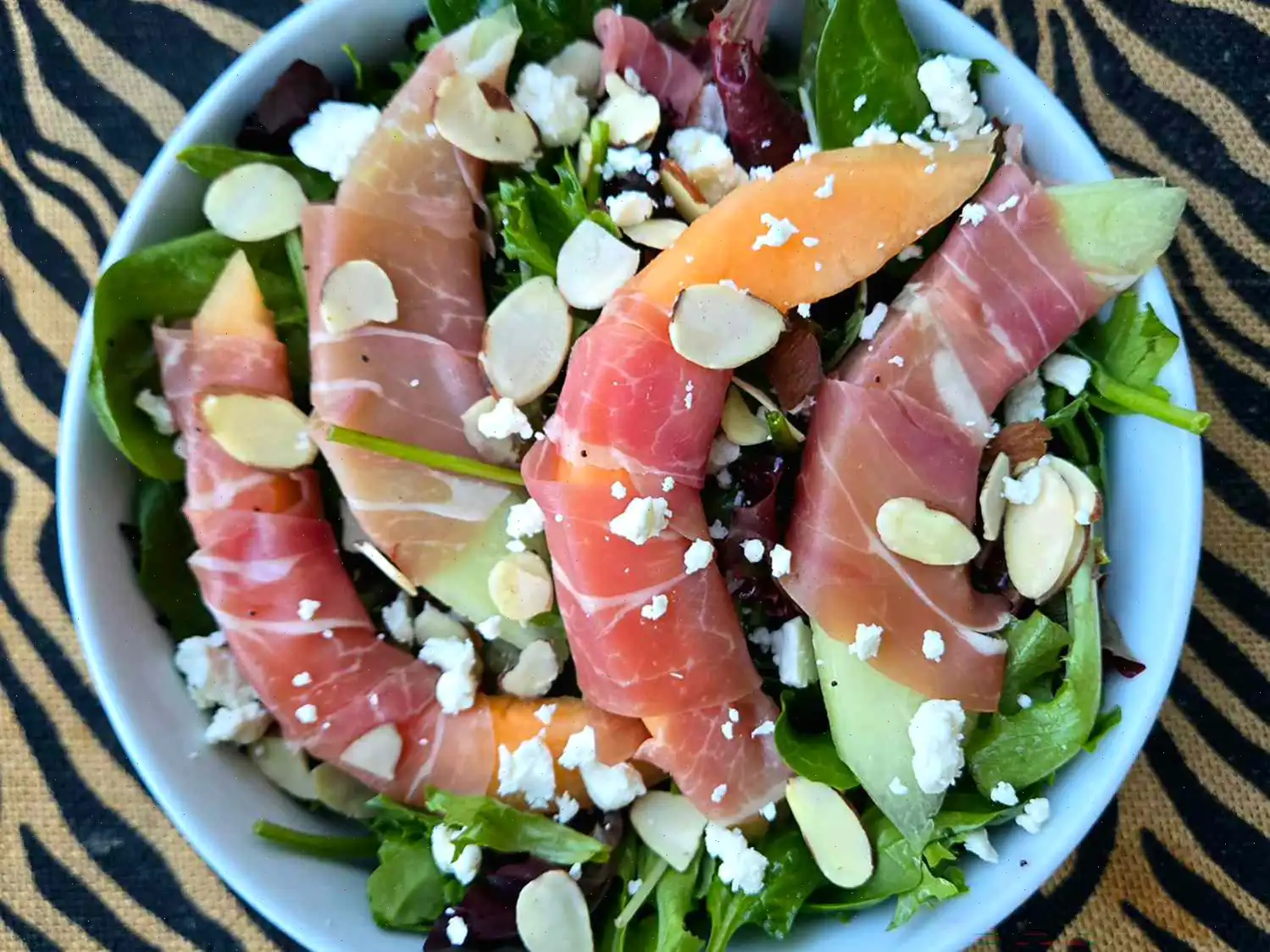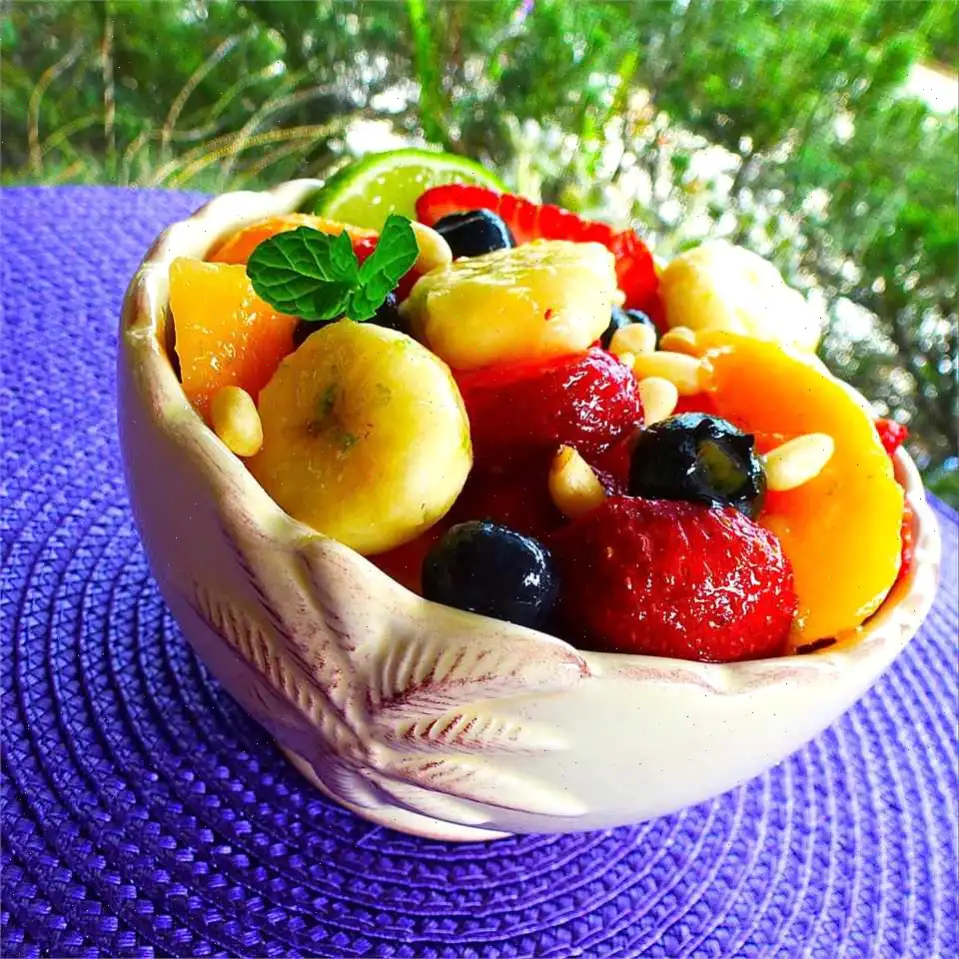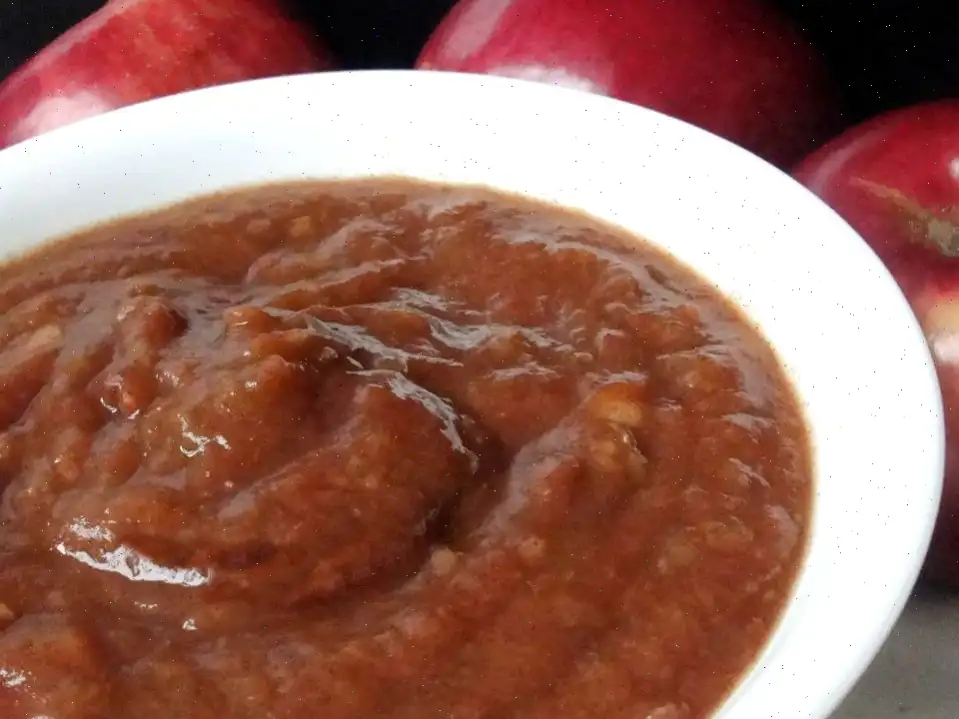
Mint Sauce Recipe
This refreshing and tangy mint vinegar sauce is perfect as a condiment for various dishes, offering a light and zesty flavor profile. Here's how to prepare it:
Ingredients
- 1 1/2 tablespoons white sugar
- 2 tablespoons boiling water
- 1 1/2 cups fresh mint leaves, finely chopped
- 1 1/2 tablespoons white wine vinegar
- 1 pinch salt
Directions
Step 1: In a bowl, combine 1 1/2 tablespoons of white sugar with 2 tablespoons of boiling water. Stir the mixture until the sugar has completely dissolved.
Step 2: Add the finely chopped mint leaves, 1 1/2 tablespoons of white wine vinegar, and a pinch of salt to the bowl. Stir until all the ingredients are well incorporated.
Step 3: Let the mixture sit for 45 minutes to allow the flavors to meld together and develop fully. This resting time is crucial for achieving the best taste.
Nutrition Facts (per serving)
| Calories | 6 |
| Total Fat | 0g |
| Saturated Fat | 0g |
| Cholesterol | 0mg |
| Sodium | 9mg |
| Total Carbohydrates | 1g |
| Dietary Fiber | 0g |
| Total Sugars | 1g |
| Protein | 0g |
| Vitamin C | 0mg |
| Calcium | 5mg |
| Iron | 0mg |
| Potassium | 10mg |
Servings: 16 servings
Note: Percent Daily Values are based on a 2,000 calorie diet. Your daily values may vary depending on your specific dietary needs.

History of Mint Sauce
Mint sauce has a long and fascinating history, deeply rooted in British cuisine. Its origins can be traced back to medieval times, where mint was used for both culinary and medicinal purposes. The sauce itself became a staple accompaniment for roasted meats, especially lamb, as its refreshing, tangy flavor complements the rich taste of the meat. Over centuries, mint sauce has remained a beloved condiment in the UK, particularly in the context of a traditional Sunday roast.
Regional Variations
While mint sauce is most commonly associated with British cuisine, it is also enjoyed in other regions with slight variations. In countries like Australia and New Zealand, it is also commonly served with lamb dishes, particularly during festive occasions. The use of fresh mint, sugar, vinegar, and sometimes a hint of lemon juice is a common denominator, but each country may tweak the balance of ingredients to suit local tastes. For example, in the United States, mint sauce is occasionally incorporated into barbecue sauces, adding a refreshing kick to grilled meats.
Difference from Similar Dishes
Mint sauce stands apart from other similar condiments like mint jelly or mint chutney, which are thicker and often sweeter. Mint jelly, in particular, is made with a clear gelatine base and has a smoother, more gel-like texture. Chutneys, on the other hand, often include additional ingredients such as fruits, spices, and vinegar, creating a more complex, chunky texture. Mint sauce, by contrast, is thinner, more vinegary, and focuses on the pure, fresh flavor of mint.
Where is Mint Sauce Typically Served?
Mint sauce is traditionally served with lamb, particularly roasted lamb, as the sharpness of the sauce cuts through the richness of the meat. It is a quintessential part of a British Sunday roast and can also accompany grilled lamb chops, lamb kebabs, or even lamb curry. In addition to lamb, mint sauce pairs beautifully with other meats like chicken, pork, turkey, or duck. For a lighter variation, some people enjoy mint sauce stirred into fresh peas or used as a dip for crispy fried appetizers.
Interesting Facts about Mint Sauce
- Mint sauce is often considered an essential component of a traditional British Sunday roast meal.
- The combination of mint and vinegar in the sauce is thought to help aid digestion, making it a practical accompaniment to heavy meats.
- In addition to its culinary uses, mint has been valued for centuries for its medicinal properties, including soothing digestive issues and relieving headaches.
- Mint sauce can be prepared ahead of time, allowing the flavors to develop and become more intense as they sit.
FAQ about Mint Sauce Recipe
Comments
Brandon Nguyen
05/28/2023 01:01:55 AM
Here is the rewritten review: This recipe is wonderfully straightforward, making it hard to mess up. I opted for fresh mint from our garden and lemon juice instead of vinegar for a tangy kick. I didn't bother measuring anything, simply going with my instincts. The dish was a perfect complement to the grilled lamb and was a big hit with everyone.








